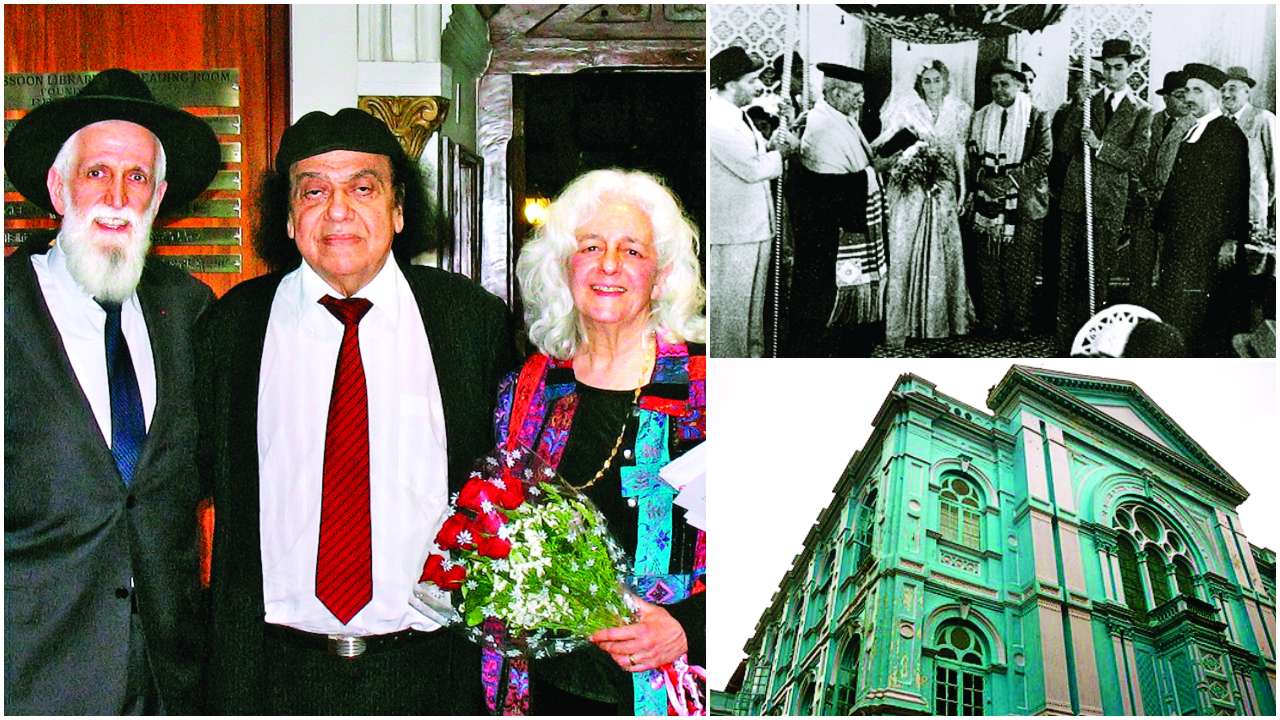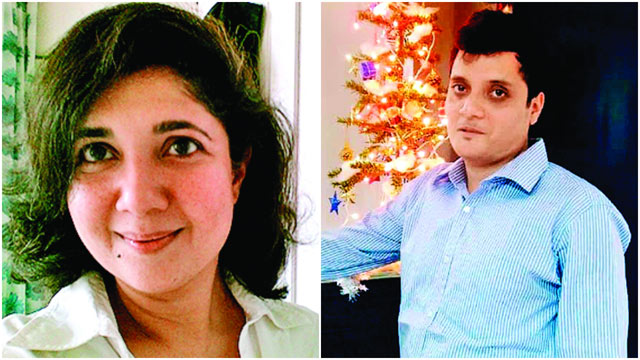
Mumbai's 'Blue Synagogue' or the Keneseth Eliyahoo (1884) at Kala Ghoda is scheduled to reopen on February 7, after two years of restoration, and the Jewish community is ecstatic.
But the two-storey Baghdadi Jew place of worship wasn't originally blue. "Till I left India in 1965, at the age of 19, the facade was just [exposed] stone. It was first painted a bright, light blue in 1984, on its centenary," recalls Sara Manasseh, over a phone call from London. Manasseh's father's grandmother was the granddaughter of David Sassoon – the Baghdadian Jew businessman, whose family built key institutions like the David Sassoon Library, Sassoon Docks, and two other synagogues – the Magen David synagogue (Byculla) and the Ohel David Synagogue (Pune). Elias was David's son in whose memory this synagogue was built, by his son Jacob (David's grandson). Hence, 'Keneseth Eliyahoo', which means House of Elias. A grim, yet popular in public memory is its connection to the Mumbai terror attacks (2008), when the then Rabbi of the synagogue, Gavriel, and his wife Rivka were killed at the Chabad House – a Jewish outreach centre, and their son Moshe was rescued by his nanny, Sandra Samuels.
To conserve this 134-year-old edifice of history and memories, the Keneseth Eliyahoo has received the necessary nip and tuck by Mumbai-conservation architect Abha Narain Lambah. Now it sports a white-and-indigo exterior and a greenish-bluish interior. Its marble, teak, gilt, stained glass works have been polished to gleam, and the leaky roof and weathered Minton tiles, finally fixed.
"We've now installed tower air-conditioners. The ground floor will run a daily kosher kitchen and an eating hall. Our chefs will prepare meals under the supervision of the Rabbi," says Solomon F Sopher, brimming with plans for the structure restored with funds from a main corporate sponsor and benefactors like the Sir Jacob Sassoon Trusts that SF Sopher is Chairman and Managing Director of, since 34 years. SF Sopher finalised on this sponsor because the earlier ones wanted a plaque acknowledging their contribution installed right outside the Hekhal (a cabinet to house Torah scrolls – the first five books of the Tanakh, handwritten on parchments at rabbinical seminaries).
Keneseth Eliyahoo was built when Colaba used to be a thriving, diasporic settlement of Bene Israelis and Baghdadi Jews, so they could walk in during Shabbat (Sabbath) – a day when work is forbidden. While the Jewish population keeps dropping, with young Jews relocating abroad for opportunities, tourists, from the nearby five-star hotels and visiting Jews, form a steady tide. "American diva Madonna and former Israeli President Shimon Peres also paid a visit," notes Daniel David, a 28-year-old Bene Israeli Jew and tour guide. While David's father is the Hazzan (choir master) here, his connection to the place runs deeper. "Many who built the synagogue were Jews, because they understood the specific requirements. My grandfather was a mistry [carpenter] with the East India Company and helped make the teak wood benches."

(Academic and author Sifra Lentin and tour guide Daniel David talk about the newly restored Keneseth Eliyahoo)
Manasseh lets on few quirks about the prayer house she's been visiting since her formative years. "This one doesn't have a clock tower like the Byculla and Pune synagogues. Unlike most synagogues whose interiors are long [rectangular], this one has a square-ish feel, which makes it spacious." She loves the stained glass windows in native foliage designs. "My mother [Rachel Menashe] told me that during World War II, the stained glass windows were either removed or wrapped in protective covering." She also enjoys how strong, natural light flows in from its many windows, especially from the stained glass portion, which keeps the place well-lit. That makes it particularly bright in comparison to the other two Sassoon synagogues because "the Pune one has darker stain glass windows and which are on the side walls, while the Byculla one has no stained glass at all."
Sifra Lentin, an academic and author at Gateway House, who writes extensively on the Indian Jewish community and unfailingly attends the yearly Seder (The Passover) prayers at the Keneseth Eliyahoo, points at more unique elements of the Orthodox Jewish prayer house. "This synagogue is designed in the neo-Baroque style so key features of the interior are expressed on the exterior. Like the [abutting] Hekhal on its western wall. The first floor, where the men sit, has the Tebah [a raised platform in the centre from where prayers are read out] and the Hekhal. Most Mumbai synagogues have this on the ground floor, but in the Keneseth it's on the first floor and the ladies' section is on the second, while the ground floor has the community hall and office."
Lentin vividly remembers the synagogue's centenary celebrations in 1984, at Hill Grange School and College [now shut], Peddar Road, used to be run by a Baghdadi Jew, Sophie Kelly. "I had to hand over flowers to the chief guest, Zail Singh, the then President of India. In preparation for this big event, I remember travelling to Cochin with my aunt, who belongs to the Paradesi Jewish community of that city, to borrow artefacts from the Paradesi community to put up at the exhibition [that was part of the commemorations]."
Manasseh treasures the "very strong" childhood memories, especially the post-prayer catching up with friends and fun traditions that have died out. Like on 'lifecycle' events – birth, marriage and the Bar Mitzvah, the new father/groom/young boy was called up to the Tebah, and pelted with "little missiles" (sticky candy), while the women ululated. "On Yom Kippur, [the Day of Atonement], about 10-12 scrolls of the sacred Torah would be brought out, and the men would hold these up... the whole spectacle was amazing. Even the Selihoth or Yom Kippur hymns, which are penitential but had such rousing and inspiring tunes, which the whole congregation eagerly awaited, and sang with verve," says the ethnomusicologist, and author of Shbahoth, a book that documents Babylonian Jewish songs. She also clarifies that Keneseth Eliyahoo is not a 'Sephardic [Jewish division from Spain]' synagogue as Wikipedia defines it. "While the Paradesi Synagogue in Cochin is Sephardi, the Sassoon synagogues are Babylonian (or Baghdadian). Not even Iraqi because the land that is now Iraq was not formed when these places were built."
"For me, the synagogue has always been an oasis of calm," says the 72-year-old, who will be present at the re-opening, and await to be flooded by the sunlight, the memories, and hopefully old friends.